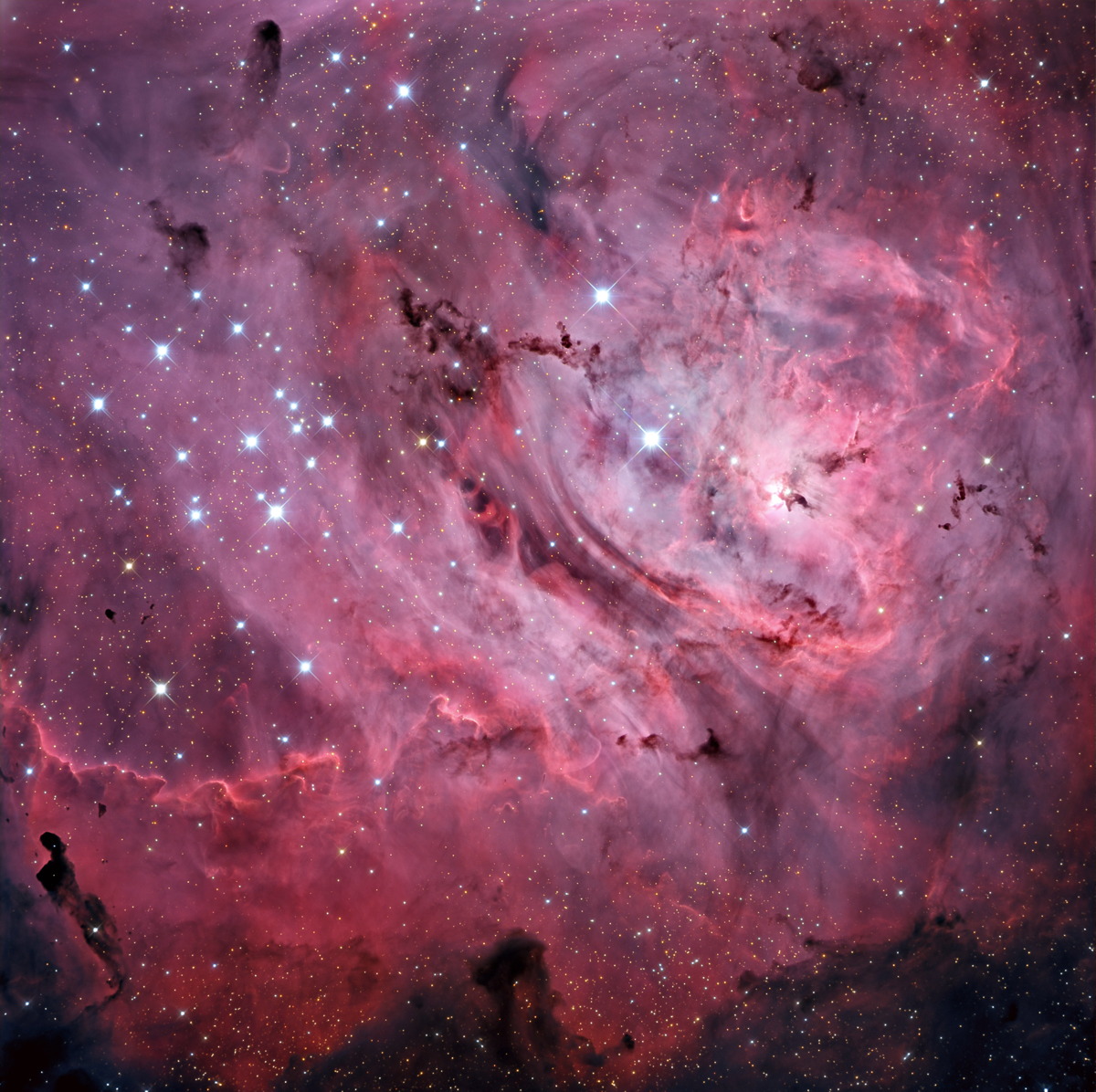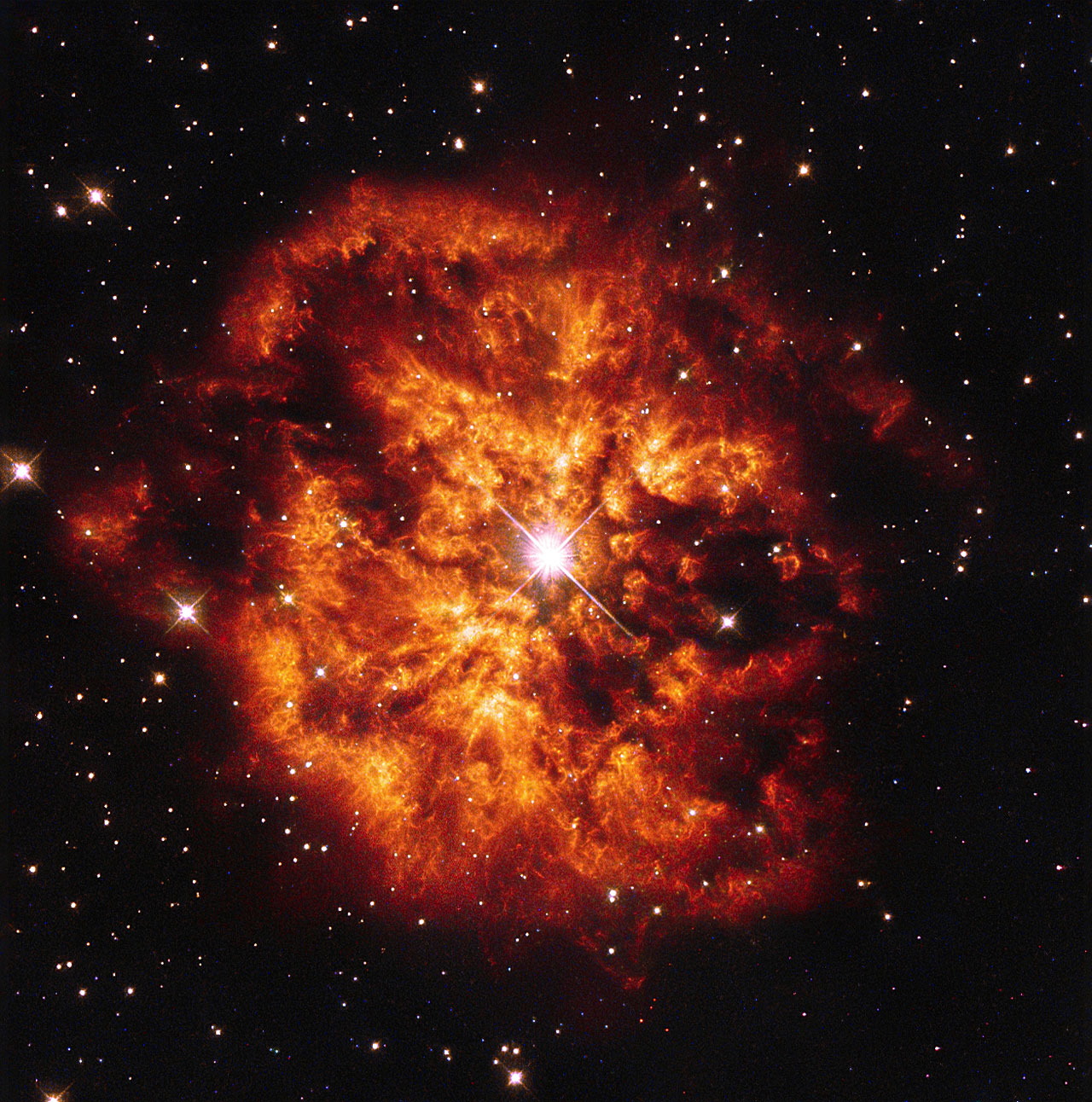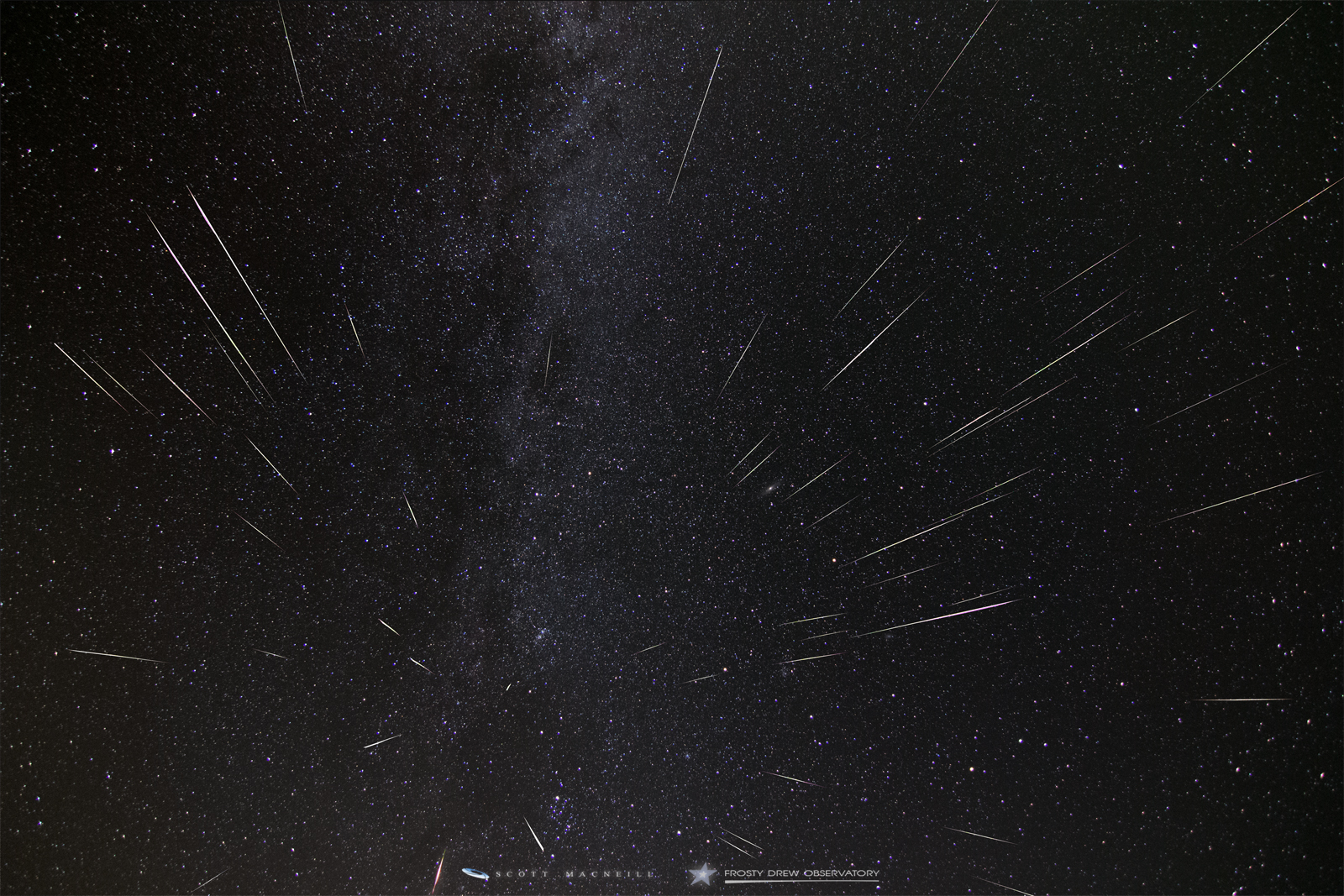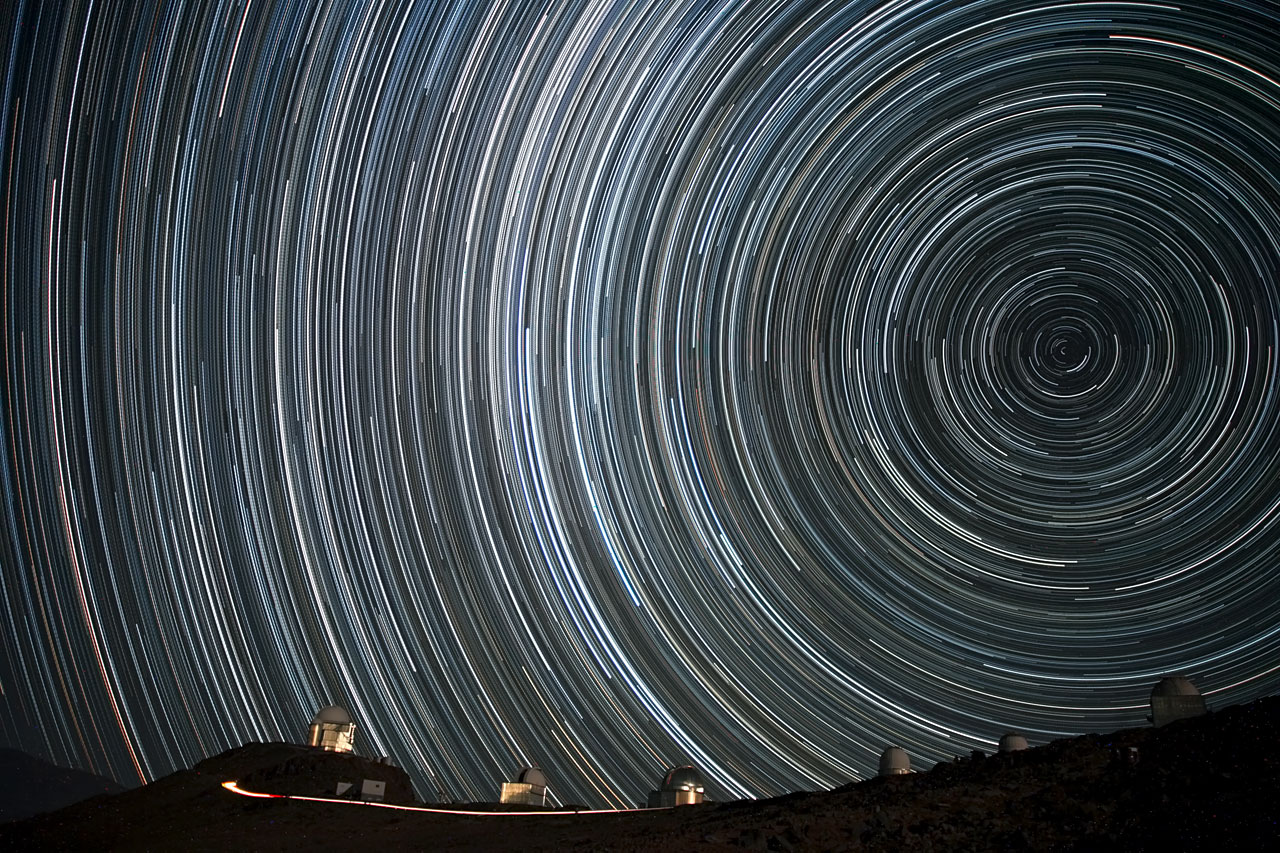Space Image of the Day Gallery (August 2015)
From Chaos Are Born the Stars
Monday, August 17, 2015: The Lagoon Nebula, known as M8 or NGC 6523, consists of a large interstellar cloud lying in the constellation of Sagittarius. The cloud of dust and gas serves as a nursery for young stars, and it lies about 5000 light-years away from Earth toward the center of the Milky Way galaxy. This image, detailing the center of the nebula, was created by Adam Block and the participants of "Astrophotography with Adam" held on May 22, 2015, at the Mount Lemmon SkyCenter, University of Arizona.
— Tom Chao
Over My Head
Tuesday, August 18, 2015: A panoramic image shows the ALMA Observatory’s antennas appearing to gaze at the Milky Way, which seems to arch over the Chajnantor Plateau in the Chilean Andes. Astrophotographer Babak Tafreshi and other members of the ESO Ultra HD expedition went on a mission to visually preserve the majesty of ESO’s observatories and their unusual surroundings in Ultra HD photos and videos. Image released Aug. 17, 2015.
— Tom Chao
Ejection
Wednesday, August 19, 2015: Star Hen 2-427 (AKA WR 124) and surrounding nebula M1-67 are seen here by the NASA/ESA Hubble Space Telescope. Both lie in the constellation of Sagittarius, 15,000 light-years away. The bright star ejects hot clumps of gas into space at over 93,000 miles per hour (150,000 km per hour), producing the nebula. Hen 2-427 is classed as a Wolf–Rayet star, characterized by intense ejection of mass. The nebula M1-67 may be no more than 10,000 years old, quite young in astronomical terms. Researchers released a version of this image in 1998, but recently it has been re-reduced with the latest software. Image released Aug. 17, 2015.
— Tom Chao
Take a Photograph
Thursday, August 20, 2015: NASA astronaut Scott Kelly tweeted this photo of the Earth taken from the International Space Station, August 19, 2015. He wrote: “Happy #WorldPhotographyDay! Traveling our world 250 mi above Earth at 17,500 mph is a visionary dream. #YearInSpace.”
— Tom Chao
Fractured
Friday, August 21, 2015: Saturn’s moon Dione contains some linear features called chasmata on its surface. These features stand out in stark contrast to round impact craters that usually cover moons. This bright network of fractures on Dione stretches 698 miles (1123 km) across. Voyager images only showed the region in poor resoution. Cassini later revealed that the markings did not consist of surface deposits of frost, as suspected, but rather a pattern of bright icy cliffs among many fractures. Possibly the stress pattern originated from Dione's orbital evolution and the effect of tidal stresses over time. Cassini spacecraft took this image in visible light with the narrow-angle camera on April 11, 2015.
— Tom Chao
Blazing Sky
Monday, August 24, 2015: Scott MacNeill of the Frosty Drew Observatory compiled three nights of Perseid meteor activity, August 13-15, 2015, into one image containing 57 meteors. He writes in an email message to Space.com: “I originally wanted to collect another night's session, though weather had different plans in New England last night. I have heard mixed reports on Perseid sightings this year. Though at Frosty Drew Observatory in Rhode Island we had quite a show with Wednesday night/Thursday morning bringing the best display. Friday night/Saturday morning brought more fireball meteors, though the overall frequency of meteor sightings was significantly less.” The observatory is located in Charlestown, Rhode Island.
— Tom Chao
There’s an Invisible Monkey
Tuesday, August 25, 2015: NASA's Spitzer Space Telescope produced this infrared image of the star-forming region NGC 2174, showing many baby stars surrounded by dust. Visible-light images of this nebula show clouds resembling a monkey’s face, prompting the nickname "Monkey's Head." Infrared light, however, shows different clouds, so the monkey's face is not visible here. In this stellar nursery, the reddish light dots appearing through the darker filaments represent infant stars enveloped in blankets of warm dust. In time, these stars will emerge from the dusty envelopes, and their light will hollow out the dust clouds surrounding them. NGC 2174 lies located around 6,400 light-years away in the northern reaches of the constellation Orion. Image released Aug. 20, 2015.
— Tom Chao
Breaking space news, the latest updates on rocket launches, skywatching events and more!
The World Rolls 'Round in the Stars
Wednesday, August 26, 2015: Stars appear to arc around the south celestial pole, over ESO's La Silla Observatory in Chile. A long exposure produces the photographic effect. La Silla, based in the outskirts of Chile’s Atacama Desert at roughly 7900 feet (2400 m) above sea level, provides over 300 clear nights a year for observing. The site hosts many of ESO’s telescopes and to national projects run by the ESO Member States. This photo includes the ESO 3.6-metre telescope on the left peak, which now supports the extrasolar planet hunter: the High Accuracy Radial Velocity Planet Searcher (HARPS). Image released August 24, 2015.
— Tom Chao
Stars Together
Thursday, August 27, 2015: Globular cluster NGC 1783 represents one of the largest globular clusters in the Large Magellanic Cloud, a satellite galaxy of our own galaxy, the Milky Way, in the southern hemisphere constellation of Dorado. John Herschel first observed NGC 1783 in 1835. It lies nearly 160,000 light-years from Earth, and possesses a mass around 170,000 times that of the sun. Globular clusters consist of dense collections of stars bound together by their own gravity, orbiting around galaxies like satellites. Image released Aug. 24, 2015.
— Tom Chao
Behold the Glorious Night
Friday, August 28, 2015: Astrophotographer Dora Miller, who goes by the nickname of "Aurora Dora," sent in a photo of an auroral display taken in Talkeetna, Alaska, on August 22, 2015. She writes in an email message to Space.com: "Finally the dark night skies are back to Alaska and the Aurora Borealis season is starting up in full glory!"
— Tom Chao











